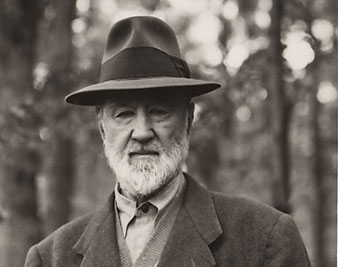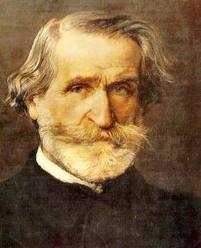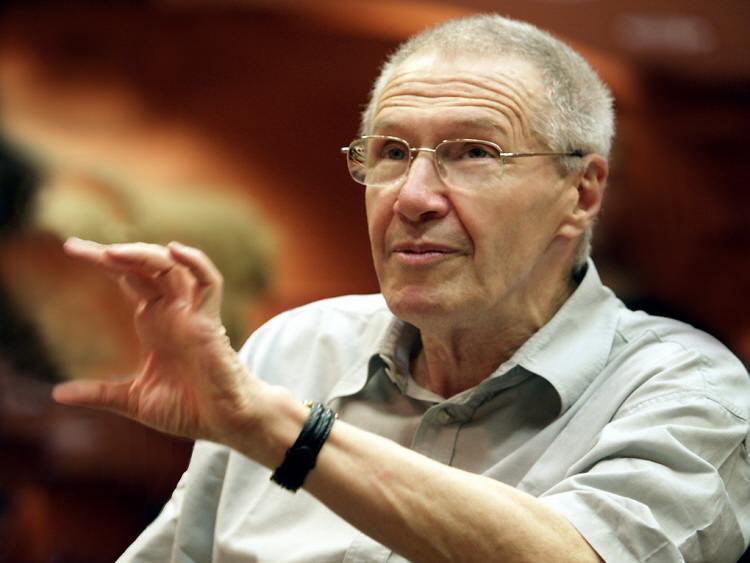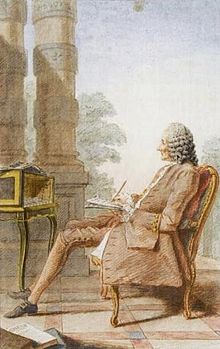Welcome to our free classical music site

Do you write about classical music? Are you a blogger? Want to team up with Classical Connect? Send us a message, let's talk!

Do you write about classical music? Are you a blogger? Want to team up with Classical Connect? Send us a message, let's talk!
October 29, 2012. Bellini and more. Vincenzo Bellini was born on November 3, 1801 in Catania, Sicily. It’s said that he was a child prodigy: started studying music at the age of two, playing piano at three, and composed his first pieces at the ago of six.
We don’t have many recordings from the Bellini’s operas for the same reason we’re poor on Verdi or Donizetti. But we do have a fantasy by Franz Liszt called Reminiscences of Norma by Bellini. Liszt’s birthday was last week, and we’re glad to have a chance to acknowledge it. Liszt wrote this paraphrase 10 years after the premier of Norma and used, in a very free form, seven themes from the opera. It’s performed here by the Canadian pianist Janice Fehlauer.
PermalinkOctober 22, 2012. Bizet, Liszt, Scarlatti, Paganini. This week yet again we commemorate the anniversaries of several extraordinary composers: Franz Liszt was born on October 22, 1811, Georges Bizet on October 25, 1838, Domenico Scarlatti on October 26, 1685 and Niccolò Paganini on October 27, 1782. Last year we celebrated Liszt’s 200th anniversary with a detailed account of his life. We’ve written about Paganini and Scarlatti on more than one occasion. Now we’ll focus on Georges Bizet.
Bizet would not live to see the success that Carmen would eventually become. After only its thirty-third performance, Bizet died suddenly from heart disease. Before his death, however, he had signed a contract to stage Carmen at the Vienna Court Opera. The Vienna production became the impetus for Carmen’s success. The opera won praise from both Richard Wagner and Johannes Brahms. Within three years, Carmen appeared in Brussels, London, New York and St. Petersburg. After winning the international stage, Carmen triumphantly returned to Paris in 1883.
Here is Carmen Fantasy, a piece by Franz Waxman based on the themes from Carmen. It’s performed by Irmina Trynkos, violin and Giorgi Latsabidze, piano. And here is the final scene from Carmen, sung in Russia by the mezzo Lidiya Zakharenko and the tenor Zurab Andjaparidze. Vladimir Fedoseev conducts the Moscow Radio Symphony Orchestra.
PermalinkOctober 15, 2012. Ives and Flynn. The first internationally acclaimed American composer, Charles Ives was born on October 20, 1974 in Danbury, Connecticut. His father, George, was an Army bandleader, and when Charles was young he listened to the bands practicing in the town square and later played drums in his father’s band. He also learned to play piano and the organ, which apparently he did very well. One might not expect a bandleader to encourage musical experimenting, but that’s just what George Ives did when he taught music to his son. At the age of 14 Charles became a church organist, then moved to New Haven, and eventually entered Yale University. There he wrote his 1st Symphony, although he probably spent as much time playing sports as studying music – he was an excellent athlete. Upon graduating from Yale, Ives joined an insurance company. When it went broke, he and his friend started their own, Ives & Myrick. A successful executive, Ives became well known within the industry and even wrote articles on aspects of the insurance business. Composing music was what he did in his spare time. In 1906 Ives wrote the first of his acknowledged masterpieces, The Unanswered Question, scored for trumpet, four flutes, and string orchestra, a very unusual but highly effective combination of instruments; Ives indicated that the strings should be positioned behind the stage, the flute on the stage, and the trumpet, the one “asking the questions,” in hall itself. In 1908 Ives and his newly wed wife moved to New York; he lived there for the rest of his life. The period from about 1908 to 1927 was very productive: Ives wrote the Concord Sonata, his most popular piano solo composition, several symphonies, including the one titled New England Holidays and the very successful Fourth. He also wrote string quartets, violin sonatas, and songs. Then, abruptly, one day in 1927 he told his wife that he could not compose any longer. From that moment on he didn’t composed another single original tune, though he continued revising his older compositions. He lived another 27 years and died at the age of 80.
bands practicing in the town square and later played drums in his father’s band. He also learned to play piano and the organ, which apparently he did very well. One might not expect a bandleader to encourage musical experimenting, but that’s just what George Ives did when he taught music to his son. At the age of 14 Charles became a church organist, then moved to New Haven, and eventually entered Yale University. There he wrote his 1st Symphony, although he probably spent as much time playing sports as studying music – he was an excellent athlete. Upon graduating from Yale, Ives joined an insurance company. When it went broke, he and his friend started their own, Ives & Myrick. A successful executive, Ives became well known within the industry and even wrote articles on aspects of the insurance business. Composing music was what he did in his spare time. In 1906 Ives wrote the first of his acknowledged masterpieces, The Unanswered Question, scored for trumpet, four flutes, and string orchestra, a very unusual but highly effective combination of instruments; Ives indicated that the strings should be positioned behind the stage, the flute on the stage, and the trumpet, the one “asking the questions,” in hall itself. In 1908 Ives and his newly wed wife moved to New York; he lived there for the rest of his life. The period from about 1908 to 1927 was very productive: Ives wrote the Concord Sonata, his most popular piano solo composition, several symphonies, including the one titled New England Holidays and the very successful Fourth. He also wrote string quartets, violin sonatas, and songs. Then, abruptly, one day in 1927 he told his wife that he could not compose any longer. From that moment on he didn’t composed another single original tune, though he continued revising his older compositions. He lived another 27 years and died at the age of 80.
We have two piano pieces by Ives, Song Without (Good) Words (here) and Some South-Paw Pitching (here), performed by Heather O'Donnell, an American pianist living in Berlin. Heather O’Donnell is a big proponent of contemporary music. To some extent she is a link to our next composer, George Flynn: in 2004 she organized a project, "Responses to Charles Ives," which commissioned seven composers to write piano works. Each composition was supposed to reflect Ives’ influence; one of the contributors was George Flynn with Remembering. Flynn says that in his youth he was greatly influenced by Charles Ives’s Concord piano sonata. Recently, Southport Records issued a CD titled String Fever with three compositions by Flynn. One of them is Together, a 27-minute continuous work for violin and piano. Flynn describes it as developing through a series textures and moods, from quiet to more "aggressive," "jubilant," then moving to "floating serenity" and on. The final sounds of Together return to the opening statement and "can thus serve to restart the piece." This composition was originally written for the violinist Eugene Gratovich, a student of Jascha Heifetz and a big supporter of contemporary music. In this recording Together is performed by the violinist Stefan Hersh with the composer at the piano. You can listen to it here.
PermalinkOctober 8, 2012. Verdi and Saint-Saëns. Giuseppe Verdi was born on October 9 (or on the 10th, we don’t know for sure) of 1813 in a village near Busetto, in the province of Parma, Emilia-Romagnia. Through an accident of history, the great Italian composer who was to become the patriotic symbol of unified Italy was actually born on a French territory: Parma, after the Napoleonic wars, was a French Department (it continued to be ruled as a duchy by Marie Louise, the second wife of Napoleon, even after the Congress of Vienna reversed most of Napoleonic conquests). Verdi studied composition in Milan, and wrote his first opera, Oberto, in 1839. It was in 1842 that he achieved the first real success with Nabucco (you can listen to the famous Chorus of the Hebrew Slaves, Va, Pensiero, from the Metropolitan Opera 2001 production, James Levine conducting, here, courtesy of YouTube). Verdi wrote a large number of operas in succession (he called this period “galley years”), none of great significance, till Rigoletto in 1851, a masterpiece and an immediate triumph. He followed up with two more stupendous operas: Il Trovatore and La traviata. The following years he produced one masterpiece after another: Un ballo in maschera in1859, La forza del destino in 1861, Don Carlos in1867. Aida was written in in1871. On our site we don’t have much of Verdi’s music and the reason is obvious: opera theaters are not in the habit of uploading their productions to independent music sites. Still, we have an interesting historical performance of the Judgment scene, from Aida. It was recorded at the Bolshoi Theater in 1969. Radamès is the brilliant Georgian-Russian tenor Zurab Andjaparidze, Amneris is Irina Arkhipova, one of the best Soviet mezzo-sopranos. Mark Ermler leads the Bolshoi orchestra (here). In Russia operas were often sung in Russian, so the Italian of this recording, however imperfect, is rather unusual. This recoding was given to us by Mr. Andjaparidze’s daughter, the pianist and a friend of this site, Eteri Andjaparidze.
become the patriotic symbol of unified Italy was actually born on a French territory: Parma, after the Napoleonic wars, was a French Department (it continued to be ruled as a duchy by Marie Louise, the second wife of Napoleon, even after the Congress of Vienna reversed most of Napoleonic conquests). Verdi studied composition in Milan, and wrote his first opera, Oberto, in 1839. It was in 1842 that he achieved the first real success with Nabucco (you can listen to the famous Chorus of the Hebrew Slaves, Va, Pensiero, from the Metropolitan Opera 2001 production, James Levine conducting, here, courtesy of YouTube). Verdi wrote a large number of operas in succession (he called this period “galley years”), none of great significance, till Rigoletto in 1851, a masterpiece and an immediate triumph. He followed up with two more stupendous operas: Il Trovatore and La traviata. The following years he produced one masterpiece after another: Un ballo in maschera in1859, La forza del destino in 1861, Don Carlos in1867. Aida was written in in1871. On our site we don’t have much of Verdi’s music and the reason is obvious: opera theaters are not in the habit of uploading their productions to independent music sites. Still, we have an interesting historical performance of the Judgment scene, from Aida. It was recorded at the Bolshoi Theater in 1969. Radamès is the brilliant Georgian-Russian tenor Zurab Andjaparidze, Amneris is Irina Arkhipova, one of the best Soviet mezzo-sopranos. Mark Ermler leads the Bolshoi orchestra (here). In Russia operas were often sung in Russian, so the Italian of this recording, however imperfect, is rather unusual. This recoding was given to us by Mr. Andjaparidze’s daughter, the pianist and a friend of this site, Eteri Andjaparidze.
Camille Saint-Saëns was also born on October 9, in 1835 in Paris (we seem to know his birth date with more certainty than Verdi’s, Paris of the time being one of the most civilized and well organized cities in the world). He lived a long life: when he wrote his first compositions around 1850, Berlioz. Liszt, and Wagner were at the peak of their careers. When he wrote his last pieces, in 1921, the year of his death, Stravinsky, Ravel, and Schoenberg were at their most creative. Even if Saint-Saëns wasn’t the greatest French Romantic, he wrote a lot of enjoyable music. Here, for example, is one of his most popular pieces, Introduction and Rondo Capriccioso, Op. 28. It’s performed by the violinist Yang Xu and Janet Kao, piano.
PermalinkOctober 1, 2012. Kurtág at the Steans. On several previous occasions we’ve written about the Steans Music Institute, Ravinia Festival’s summer conservatory. The Steans brings together talented young musicians from many countries; they study with great teachers, play music together and perform. Public performances are an important part of the Steans, and their programming very often is creative and adventuresome. This year it prominently featured the works of György Kurtág, one of the most interesting composers of the 20th century. Kurtág was born in 1926 in the city of Lugoj, in the Banat region, which after the WWI became part of Romania but had previously belonged to the Kingdom of Hungary. Kurtág was born into a Jewish-Hungarian family. He moved to Budapest in 1946 and enrolled in the Ferenc Liszt Academy of Music. There he met György Ligeti, also a Hungarian Jew from Romania, and also an aspiring composer. They became good friends. Following the Hungarian Uprising of 1956, Kurtág moved to Paris, where he studied with Darius Milhaud and Olivier Messiaen. During that time he also discovered the music of Anton Webern, which greatly influenced his own work. He later returned to Hungary but retained some freedom of movement: in 1971 he was allowed to go to West Berlin for a year. He left Hungary for good in 1986, and since then has lived in Germany, Austria, and France.
play music together and perform. Public performances are an important part of the Steans, and their programming very often is creative and adventuresome. This year it prominently featured the works of György Kurtág, one of the most interesting composers of the 20th century. Kurtág was born in 1926 in the city of Lugoj, in the Banat region, which after the WWI became part of Romania but had previously belonged to the Kingdom of Hungary. Kurtág was born into a Jewish-Hungarian family. He moved to Budapest in 1946 and enrolled in the Ferenc Liszt Academy of Music. There he met György Ligeti, also a Hungarian Jew from Romania, and also an aspiring composer. They became good friends. Following the Hungarian Uprising of 1956, Kurtág moved to Paris, where he studied with Darius Milhaud and Olivier Messiaen. During that time he also discovered the music of Anton Webern, which greatly influenced his own work. He later returned to Hungary but retained some freedom of movement: in 1971 he was allowed to go to West Berlin for a year. He left Hungary for good in 1986, and since then has lived in Germany, Austria, and France.
Kurtág wrote a relatively small number of works, many of them rather late in his career; the 1980s were probably his most productive years, although he continues to write even these days: his “Short Messages” Op.47 were published in 2011. One of the works that were programmed by the Steans, Signs, Games and Messages for solo viola, is a series of short episodes, each in a distinct style and mood. The work was formally started in 1989, even though some of the pieces were sketched earlier, and remains a work in progress, as some pieces are revised and other are being added to the growing collection. Most of the movements are two-three minutes long; the shortest, Beating, is a Webernian 24 seconds long (To the exhibition of Sári Gerlóczy is all of four seconds longer), while the longest, In Nomine – all’ ongherese, is the whopping four minutes and 40 seconds.
At the Steans, different violists performed selections from the work. Molly Carr played Signs I, Signs II, and Hommage á John Cage (here). Shuangshuang Liu continued with In Nomine—all’ ongherese and Virág – Zsigmondy Dénesnek (A Flower for Dénes Zsigmondy, one of the more unusual pieces), here. Then Wenting Kang played Perpetuum mobile, Klagendes Lied (Plaintive Song) and Kromatikus feleselős (here). Steven Laraia followed with Gerlóczy Sári Kiállitására (To the exhibition of Sári Gerlóczy), In memoriam Aczél György, and In memoriam Tamás Blum (here). Finally, the French vioist Adrien La Marca plays Beating, J. H. Song,and The Carenza Jig (here).
PermalinkSeptember 24, 2012. Rameau, Shostakovich. Jean-Philippe Rameau was born on September 25, 1683 in Dijon. Together with François Couperin, Rameau was the first truly French composer of the Baroque era: though Jean-Baptiste Lully was the pioneer of the French Baroque, he was born in Florence and moved to France as a teenager. Most of Rameau’s early compositions were instrumental: he didn’t write an opera till he was 50, but once he had, they became a major event in France, not just musically but culturally. Some people still preferred the operas of Lully, while others thought that Rameau was a much better composer. In 17th century France these were important matters: the “culture wars” erupted within the country, or at least among its literate part, dividing it into two camps, the "Lullyistes" and the "Rameauneurs"; the partisan pamphlets continued to be written for many years. Rameau lived during the time of remarkable flourishing of the French culture in general. He wrote operas to librettos by Voltaire. He became a character in Diderot’s famous dialogue, Le neveu de Rameau (Rameau's Nephew). And he earned the enmity of Jean-Jacques Rousseau, who considered himself a composer, not just a writer and philosopher. The 1730s and ’40s were the most productive period of Rameau’s life. He wrote a number of "musical tragedies," such as Castor et Pollux, and the newly restored Les Boréades, which were never performed during Rameau’s lifetime; and many opera-ballets - Les Indes galantes being probably the most famous. He received the title of "Compositeur du Cabinet du Roi" and a nice pension. In his later years he wrote less, and by then his operas lost some of their freshness: the "Italian" operas came into vogue, their major proponent being Christoph Willibald Gluck, whose Orfeo ed Euridice was premiered in October of 1762. Rameau died on September 12, 1764, two weeks before his 81st birthday. Here is Rameau’s Gavotte and Doubles, performed by the Israeli pianist Matan Porat. Rameau wrote the Nouvelles Suites de Pièces de Clavecin in 1726-27. This collection forms two large suites, in A Minor and in G Major. Gavotte and Doubles is from the former.
the first truly French composer of the Baroque era: though Jean-Baptiste Lully was the pioneer of the French Baroque, he was born in Florence and moved to France as a teenager. Most of Rameau’s early compositions were instrumental: he didn’t write an opera till he was 50, but once he had, they became a major event in France, not just musically but culturally. Some people still preferred the operas of Lully, while others thought that Rameau was a much better composer. In 17th century France these were important matters: the “culture wars” erupted within the country, or at least among its literate part, dividing it into two camps, the "Lullyistes" and the "Rameauneurs"; the partisan pamphlets continued to be written for many years. Rameau lived during the time of remarkable flourishing of the French culture in general. He wrote operas to librettos by Voltaire. He became a character in Diderot’s famous dialogue, Le neveu de Rameau (Rameau's Nephew). And he earned the enmity of Jean-Jacques Rousseau, who considered himself a composer, not just a writer and philosopher. The 1730s and ’40s were the most productive period of Rameau’s life. He wrote a number of "musical tragedies," such as Castor et Pollux, and the newly restored Les Boréades, which were never performed during Rameau’s lifetime; and many opera-ballets - Les Indes galantes being probably the most famous. He received the title of "Compositeur du Cabinet du Roi" and a nice pension. In his later years he wrote less, and by then his operas lost some of their freshness: the "Italian" operas came into vogue, their major proponent being Christoph Willibald Gluck, whose Orfeo ed Euridice was premiered in October of 1762. Rameau died on September 12, 1764, two weeks before his 81st birthday. Here is Rameau’s Gavotte and Doubles, performed by the Israeli pianist Matan Porat. Rameau wrote the Nouvelles Suites de Pièces de Clavecin in 1726-27. This collection forms two large suites, in A Minor and in G Major. Gavotte and Doubles is from the former.
Dmitry Shostakovich was born on the same day in 1906. We duly celebrate his birthday each year (for example, here). This time we’ll just present one piece, the first movement of Symphony no. 7 in C Major, Op. 60 - the so-called Leningrad Symphony. It was completed in December of 1941 and premiered in Kuibyshev on March 5, 1942. (Kuibyshev, now restored to its historical name of Samara, was the city where the Soviet government evacuated its most important institutions to fearing that Moscow may fall to the advancing German armies. The government relocated there, a never-used bunker for Stalin was built, and the prestigious Bolshoi Theater was moved to Kuibyshev as well). Samuil Samosud conducted the orchestra of the Bolshoi, and the performance was broadcast all over the world. The Soviets considered the symphony the musical epitome of the resistance to the Nazi invasion. These days it’s much less clear whether that was the case: Rostislav Dubinsky, the first violinist of the Borodin Quartet, who knew Shtostakovich very well, maintained that the first movement was completed a year before the war started. We’re not going to resolve this controversy, but you can listen to this movement (here), performed by the orchestra with an awkward Soviet name of The USSR Ministry of Culture Symphony Orchestra. At the time of this recording (1984), the music director of the orchestra was one of the most interesting Russian conductors of that era, Gennady Rozhdestvensky. He is on the podium.
Permalink